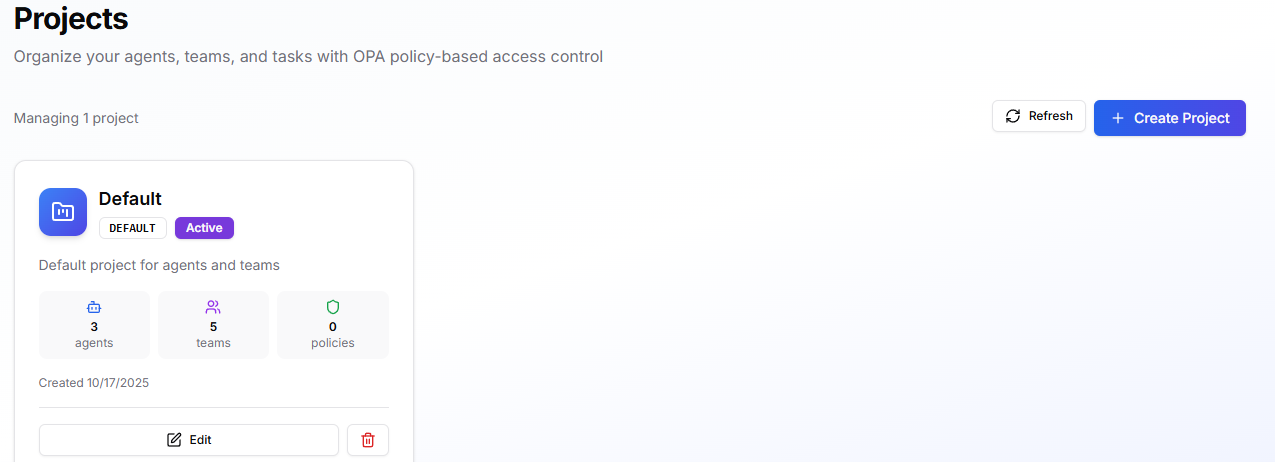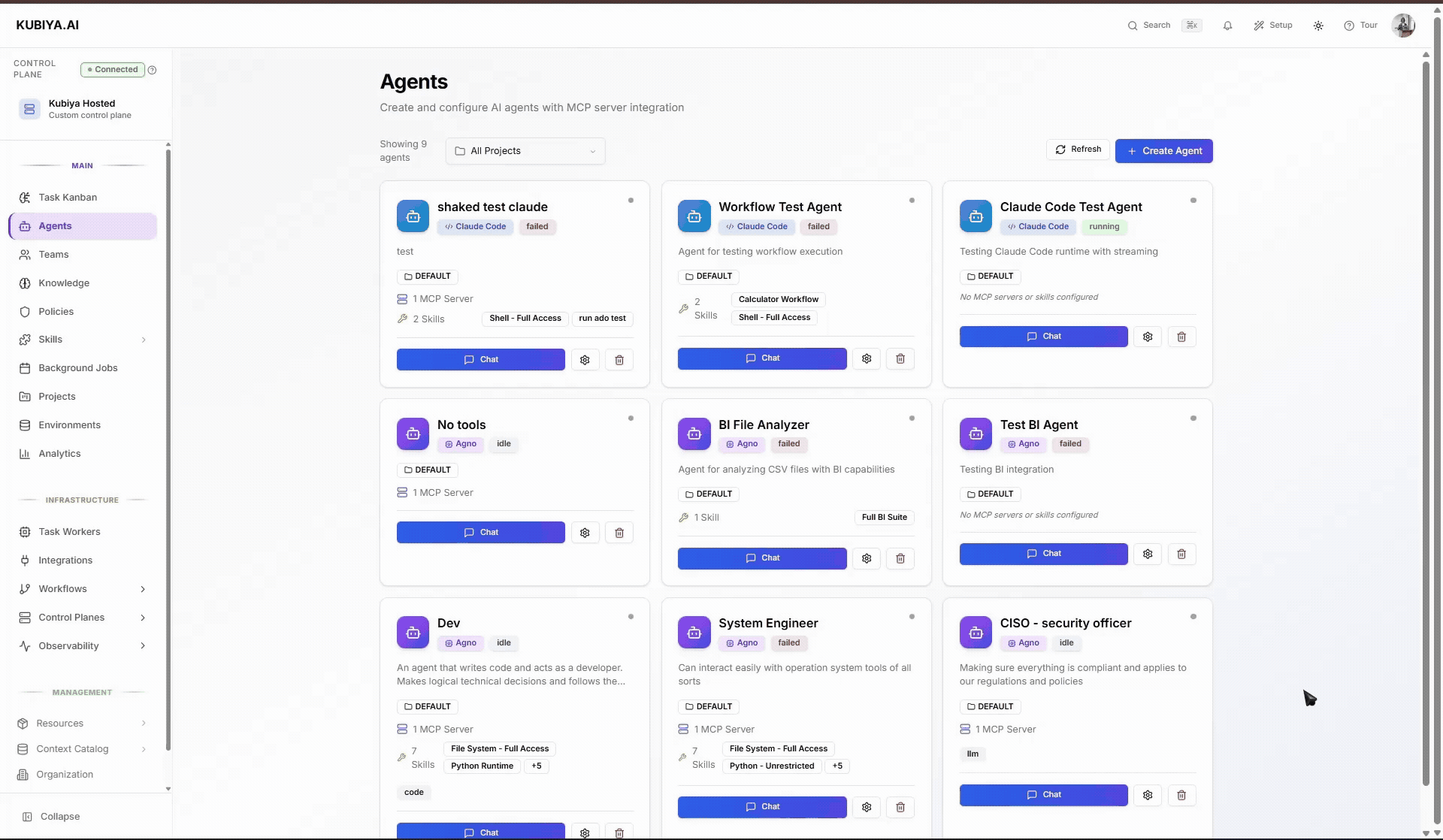
When to use
- Separate work by product, business unit, customer, or lifecycle (e.g., Payments, Security, Production).
- Apply different OPA policies to different areas of work.
- Provide a shared knowledge base and resources to all agents and teams in that area.
- Set a project-wide default LLM model (teams/agents can still override).
What it touches
- Inheritance: Project > Team > Agent. Teams and agents inherit project context (Knowledge Base, Resources) and policies; they may add more at their own level.
- Model precedence: Agent > Team > Project default > platform default.
- Execution: Projects organize access and context; Environments and Task Queues determine where and how tasks run.
Before you begin
- Have at least one Policy ready if you plan to enforce guardrails from day one.
- Add any Knowledge Base items and Resources you want available project-wide.
Create a project

- Go to Projects > Create Project.
- Project Name and Project Key: enter a clear name and a short identifier.
- Description: summarize the project’s scope.
- Project Goals: outline what this project aims to achieve (helps planning and discovery).
- Default LLM Model (optional): choose a fallback model for teams/agents that don’t specify one.
- Project Context
- Knowledge Base: add docs/runbooks/wiki entries relevant to all work here.
- Resources: select APIs, datasets, services from your catalog.
- OPA Policies: add one or more policies to enforce across the project.
- Click Create Project. Any Teams or Agents added to this project will inherit the context and policies.
Manage and operate
- Edit a project at any time to update goals, default model, context, or policies; changes apply to future runs immediately.
- Assign Teams and Agents to bring existing assets under the project’s context/guardrails.
- Scope changes: moving a team/agent between projects changes what they inherit (review policies and context after moving).
- Auditing: use Projects to filter views and audit activity relevant to a specific product or customer area.
Typical setups
- Product-based: Mobile App, Payments, Data Platform, each with its own resources and policies.
- Customer-based: ACME Corp, Contoso, useful for MSSP or multi-tenant work.
- Lifecycle-based: Sandbox, Staging, Production, same teams, different guardrails.
For more info on how to use the cli to manage projects go to Projects Cli
Tips
- Keep project goals short and actionable; they double as planning context.
- Centralize shared docs and service endpoints in the Project Context; add sensitive credentials at the Environment level.
- Start with permissive policies in non-prod, then tighten in production.
- Use consistent naming/keys so teams and agents are easy to find and filter.
